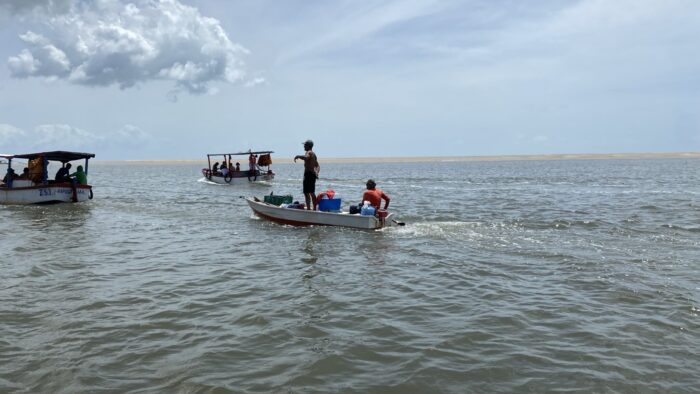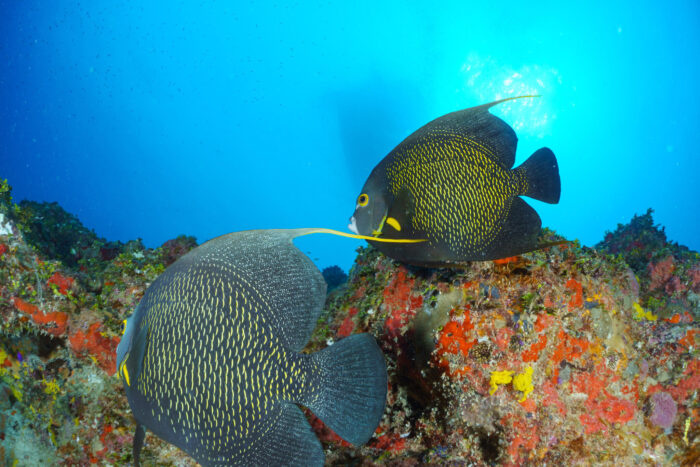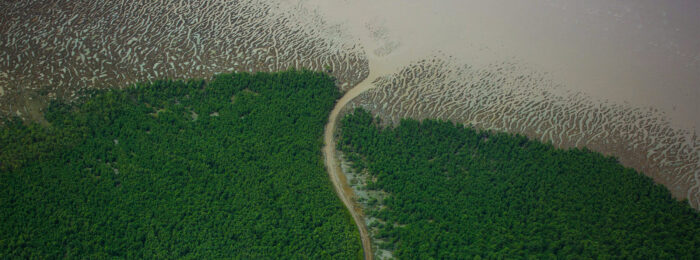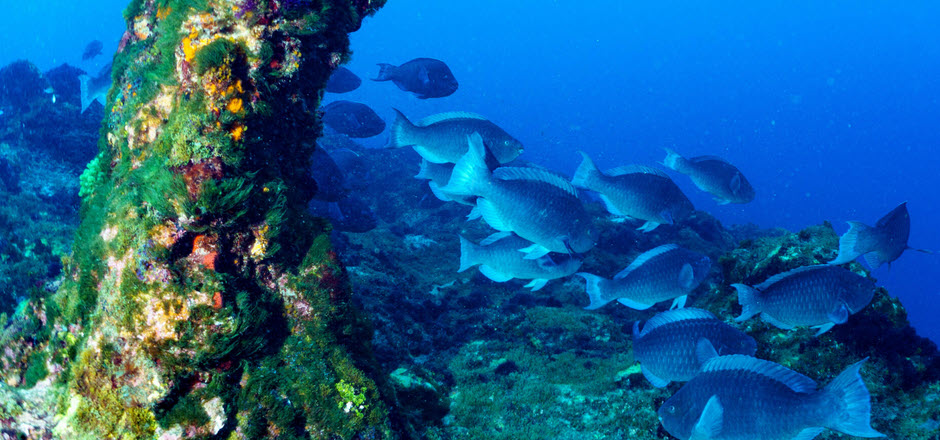- The Parcel de Manuel Luís coral reef, off the coast of northeastern Brazil, is a vital habitat for several species, including 53 at risk of extinction.
- Despite vetoes from Brazil’s environmental regulator, the local government is seeking to give the go-ahead to oil drilling projects in this part of the Pará-Maranhão Basin.
- Oil drilling in the region also poses a threat to the longest continuous stretch of mangrove in the world, which runs from the Maranhão coastline to the northern state of Amapá, in the Amazon.
- This article is one of a series originally published in Portuguese by Agência Pública, São Paulo and translated for Mongabay and LAB by Matty Rose. You can read the original here.
Business leaders and local government officials in Brazil are relishing the opportunity to extract up to 30 billion barrels of oil from offshore deposits off the northeastern state of Maranhão.
But the location is also home to the largest coral reef formation in South America, the Parcel de Manuel Luís. Parcel de Manuel Luís Marine State Park hosts a number of endemic species, including those at risk of extinction, and is considered one of the most stunning reef environments in South America. Oil drilling in the region would also pose a threat to the longest continuous stretch of mangrove in the world, which runs from the Maranhão coastline to the northern state of Amapá.
In December 2019, IBAMA, Brazil’s environmental protection agency, recommended that eight blocks from the oilfields of the Pará-Maranhão Basin be removed from the auction being conducted at the time by Brazil’s National Petroleum Agency. It cited the “environmental infeasibility of activities that create the risk of oil spills along the coast of Pará and Maranhão and on the Parcel de Manuel Luís [coral reef].”
The risks of such activities were reaffirmed in February 2020 by Brazil’s Ministry of Mines and Energy and the Ministry of Environment. The decision to block oil exploration in the area remains in force, pending the completion of more detailed environmental studies and the issuance of an environmental report on the blocks in the basin.
Despite this, state-owned oil company Petrobras and several private oil companies have continued to downplay the risks and are pressuring environmental agencies to award the licenses needed to commence exploration.
Allan Kardec Duailibe Barros Filho, president of Gasmar, a mixed-capital gas company in Maranhão and the state government’s go-to person on the topic, is among those pushing for a decision from IBAMA.
“The chances of a spill, going by Brazil’s track record in the exploration phase, is zero. It has never happened. Environmental laws in Brazil are too strict. Nowadays, no company even dares to dream of causing a spill, because its shares would collapse. This story [of the potential for a spill] is a narrative that is trying to be imposed,” Kardec said.

Alexandre Costa, a professor at Ceará State University, sees it otherwise: “Any type of oil operation creates enormous imbalances. There is no such thing as a risk-free oil operation.”
Costa said that, contrary to Kardec’s claims, the imbalances can be observed from as early on as in the prospecting phase, when studies are conducted to identify the submerged oilfields.
“The techniques used [in this phase], such as seismic [blasting], for example, affect animals that depend on echolocation, and this destabilizes the lives of a number of animals that rely on it,” Costa said.
Kardec, who is also a professor at the Federal University of Maranhão and former director of the National Petroleum Agency, was the lead author of a scientific study, supported by the Federation of Industries of the State of Maranhão, that “indicated the possible existence of 20-30 billion barrels of oil in Risked Prospective Recoverable Resources (as defined by the Society of Petroleum Engineers, SPE, and the World Petroleum Congresses, WPC).”
A technical paper published by the researchers also said that, “in the event of any oil spill (minimum probability for an exploratory well),” the mangrove forests of Amapá and Pará wouldn’t be polluted “because Brazil’s Northern Current is very strong and would carry any floating material into a vortex in the middle of the equatorial Atlantic Ocean.”
But Jorge Nunes, a fellow professor at the Federal University of Maranhão, said the argument put forward by the researchers is a dangerous one.
“This is a surface-level current, but how would it work on the ocean floor? Are there other circulation patterns?” Nunes said. “On its own, the current is not going to be enough to save the coral reef or the longest continuous mangrove forest on the planet [which lies on the same coastline].”
Nursery for 53 species at risk of extinction
Established under a state decree in 1991, Parcel de Manuel Luís Marine State Park spans 45,238 hectares (111,785 acres) and is vital for the survival of 53 species that are at risk of extinction in the Pará-Maranhão Basin. This is almost double the number of at-risk species recorded in the Amazon Basin (27), with 25% of them categorized as critically endangered (13 species). Another 15% (eight species) are categorized as endangered and the rest (32 species) as vulnerable.
Responsibility for the marine park’s management and environmental monitoring lies with the Maranhão state government’s environment secretary. In an interview with Agência Pública, the secretary’s superintendent for biodiversity and protected areas, Laís de Morais Rêgo Silva, denied that the potential exploration of oil posed any risk to the park.

“There are just two blocks that are available for auction that have a closer proximity [to the park], but with a certain distance,” Silva said. He added projects of this type are subject to environmental impact assessments that use modeling for possible oil spills “that don’t even exist yet.”
For Costa, who holds a Ph.D. in atmospheric sciences, even if there were no risk of oil spills, the expansion of the production of fossil fuels, responsible for further accelerating global warming, would be a lethal blow to the entirety of the coral reefs that make Brazil’s equatorial region an essential asset for the preservation of marine life.
“This could have extremely serious consequences for marine life,” he said, “and not only that, as we know that many human lives depend on marine life, for fishing and ecotourism.”

This report is the result of the Oil and Climate Change edition of Agência Pública’s Microgrants initiative, carried out in partnership with the Brazil office of WWF. This 16th edition of the competition selected journalists to investigate the socioenvironmental impacts of the oil exploration blocks in the Amazon region.
This article was first published here in Portuguese by Agência Pública and translated to English by Matty Rose from the Latin America Bureau.
Banner image of fish in the Parcel de Manuel Luís coral reef, Brazil. Image courtesy of Léo Francini/Agência Pública.

